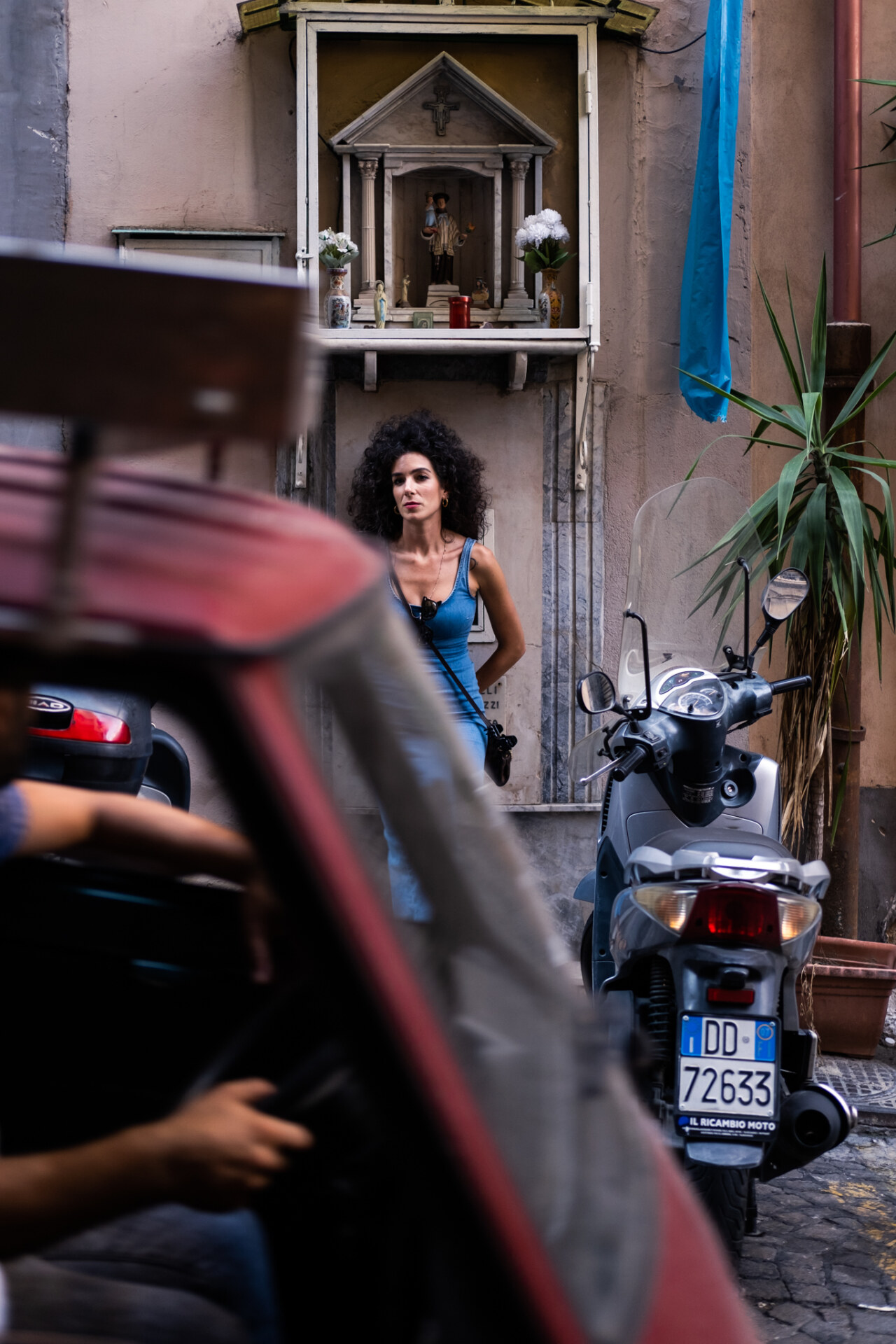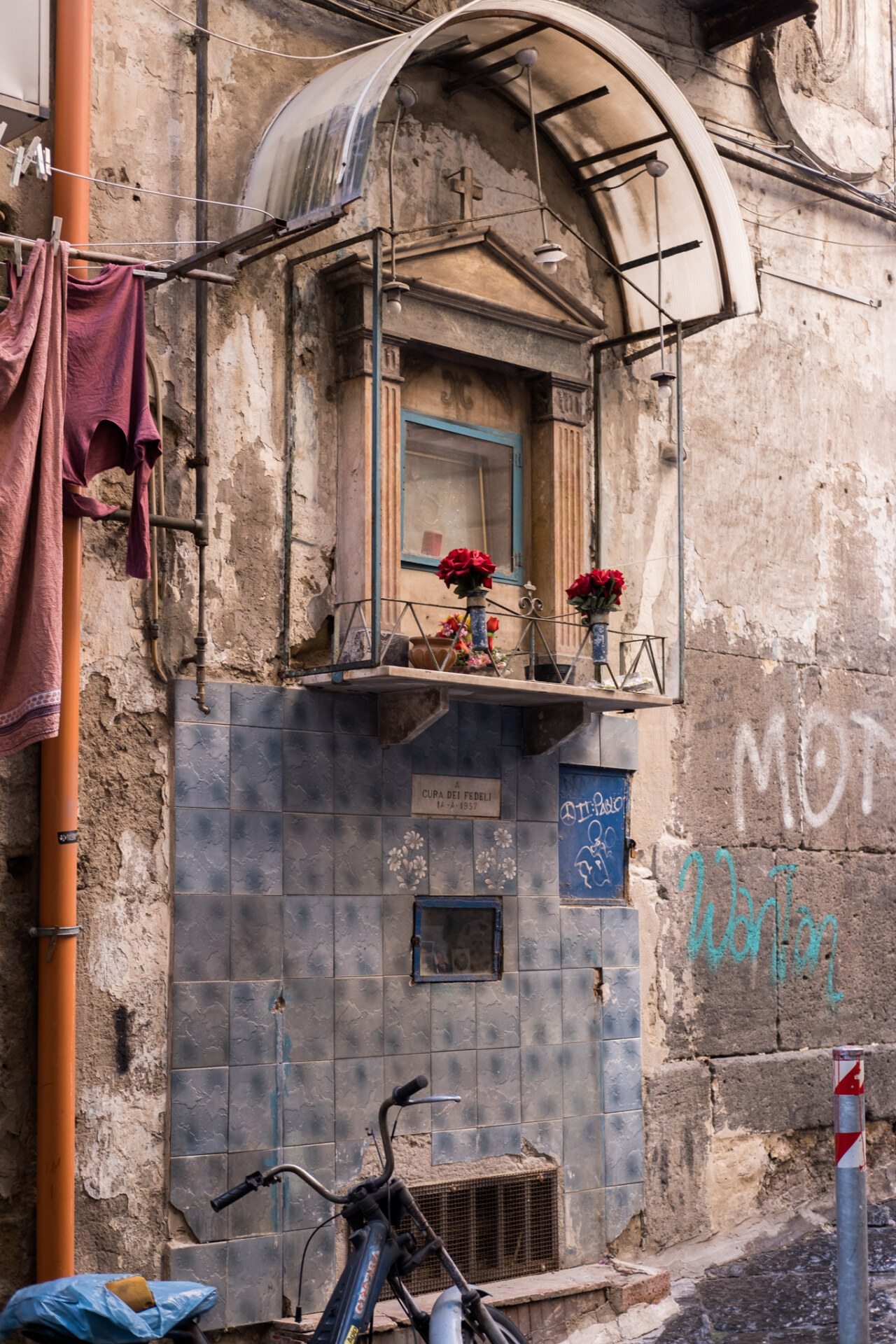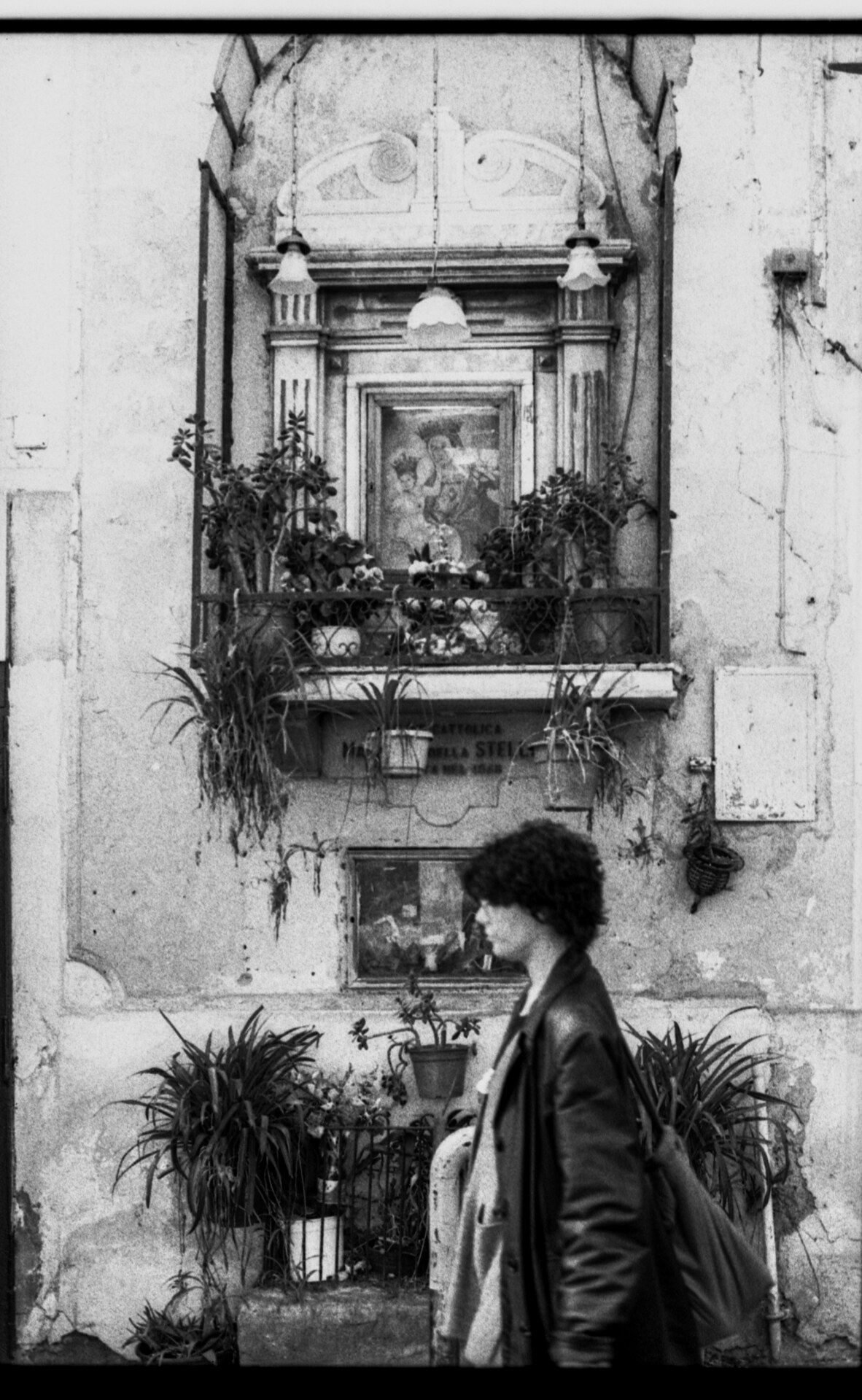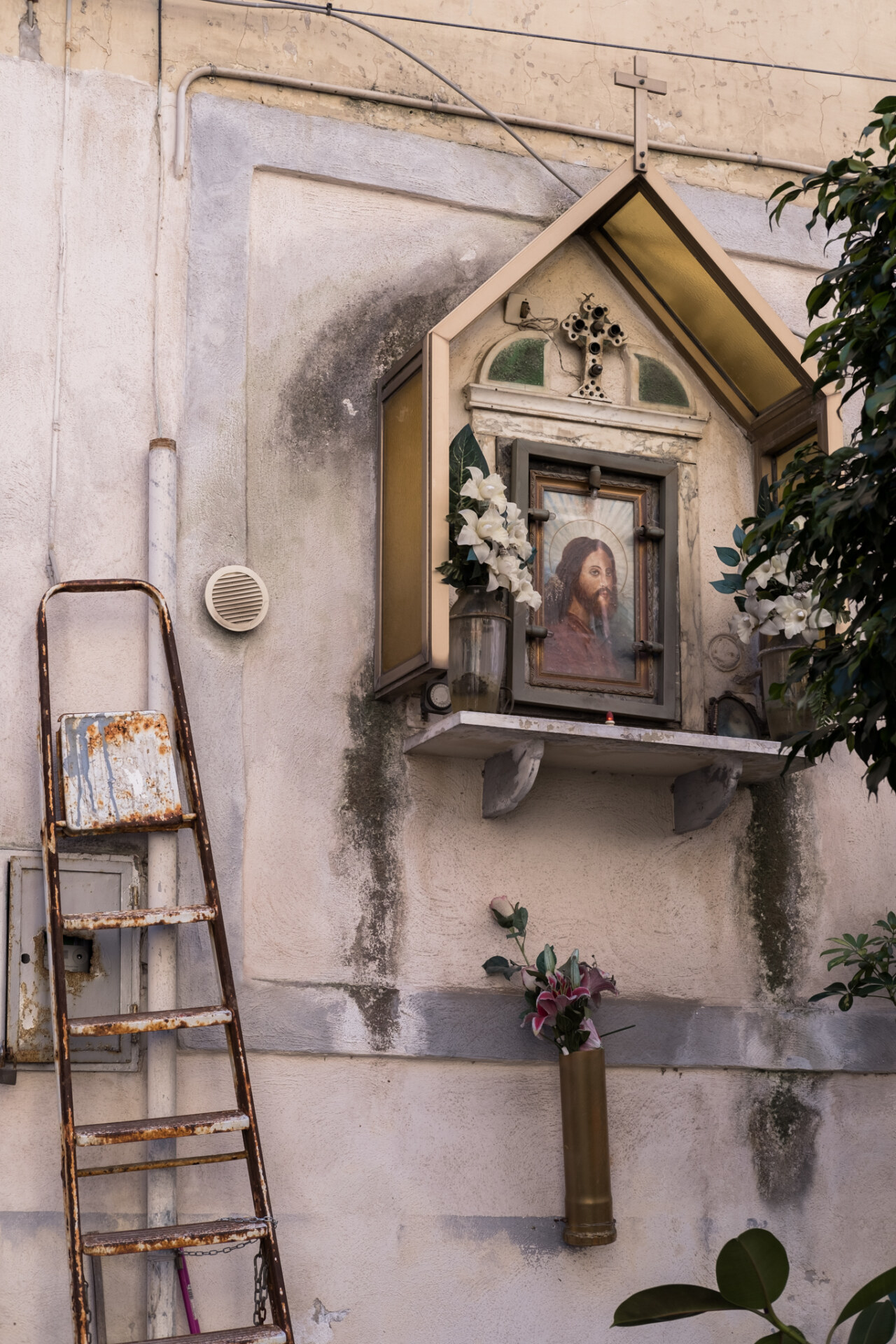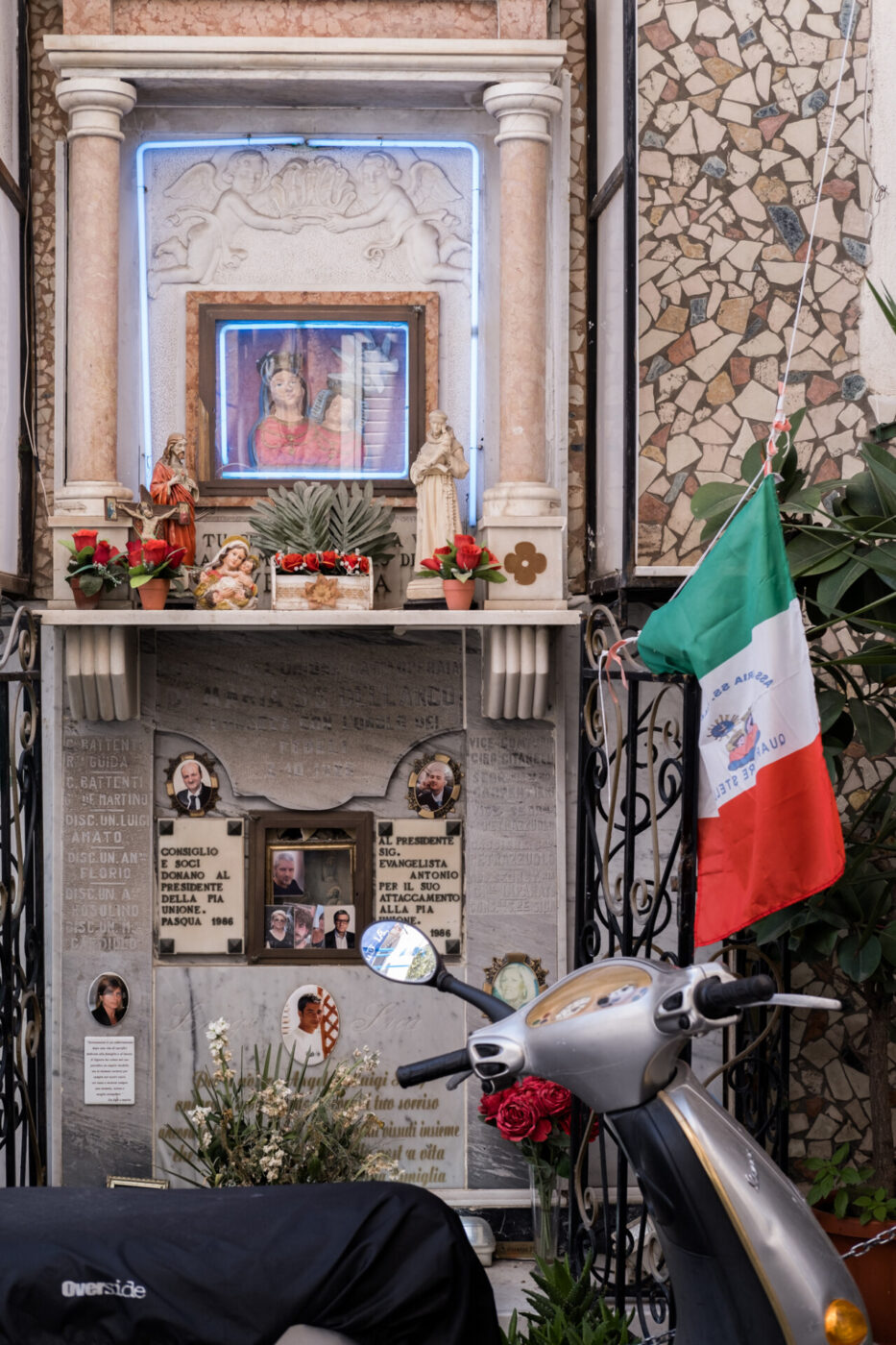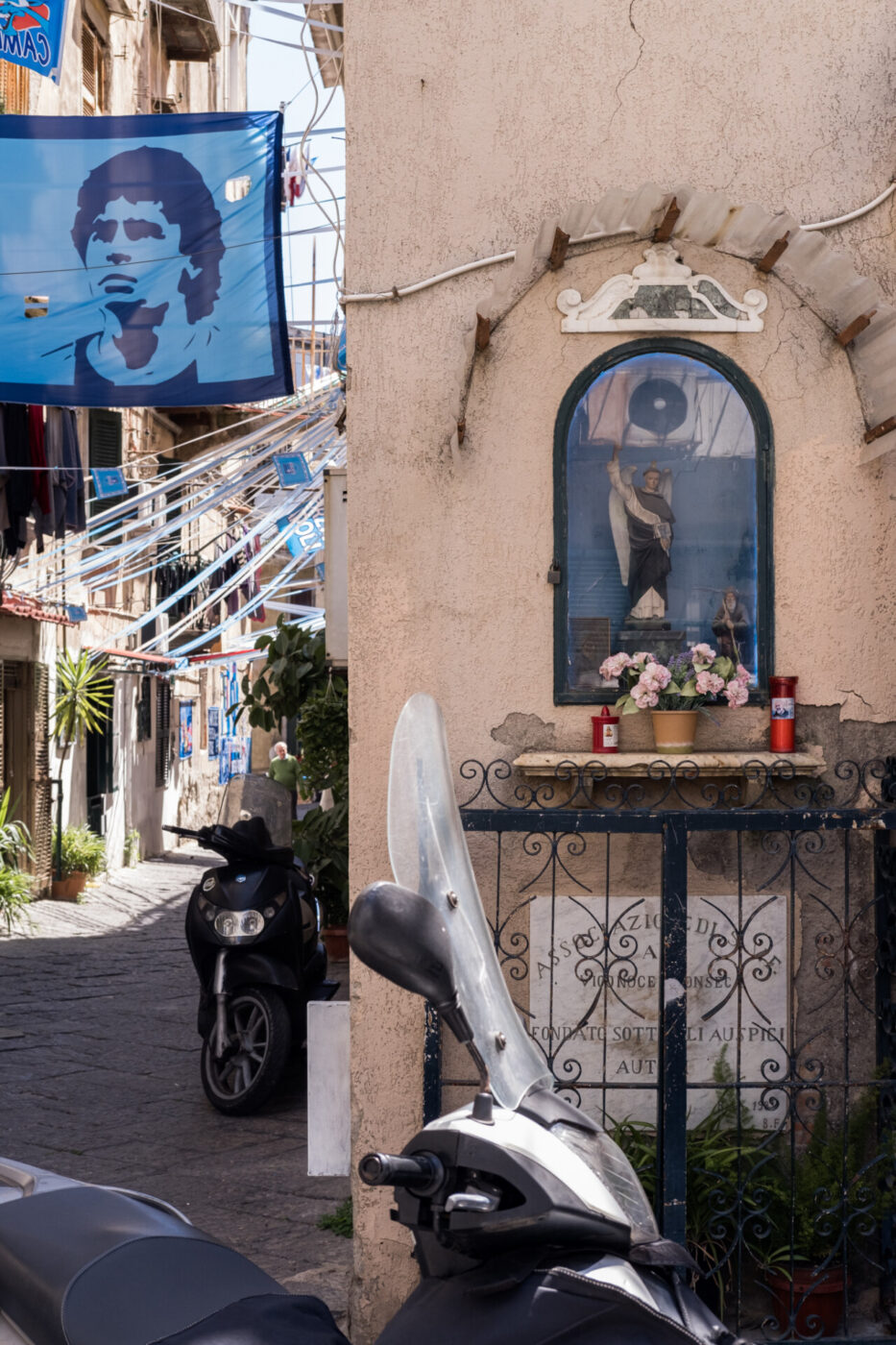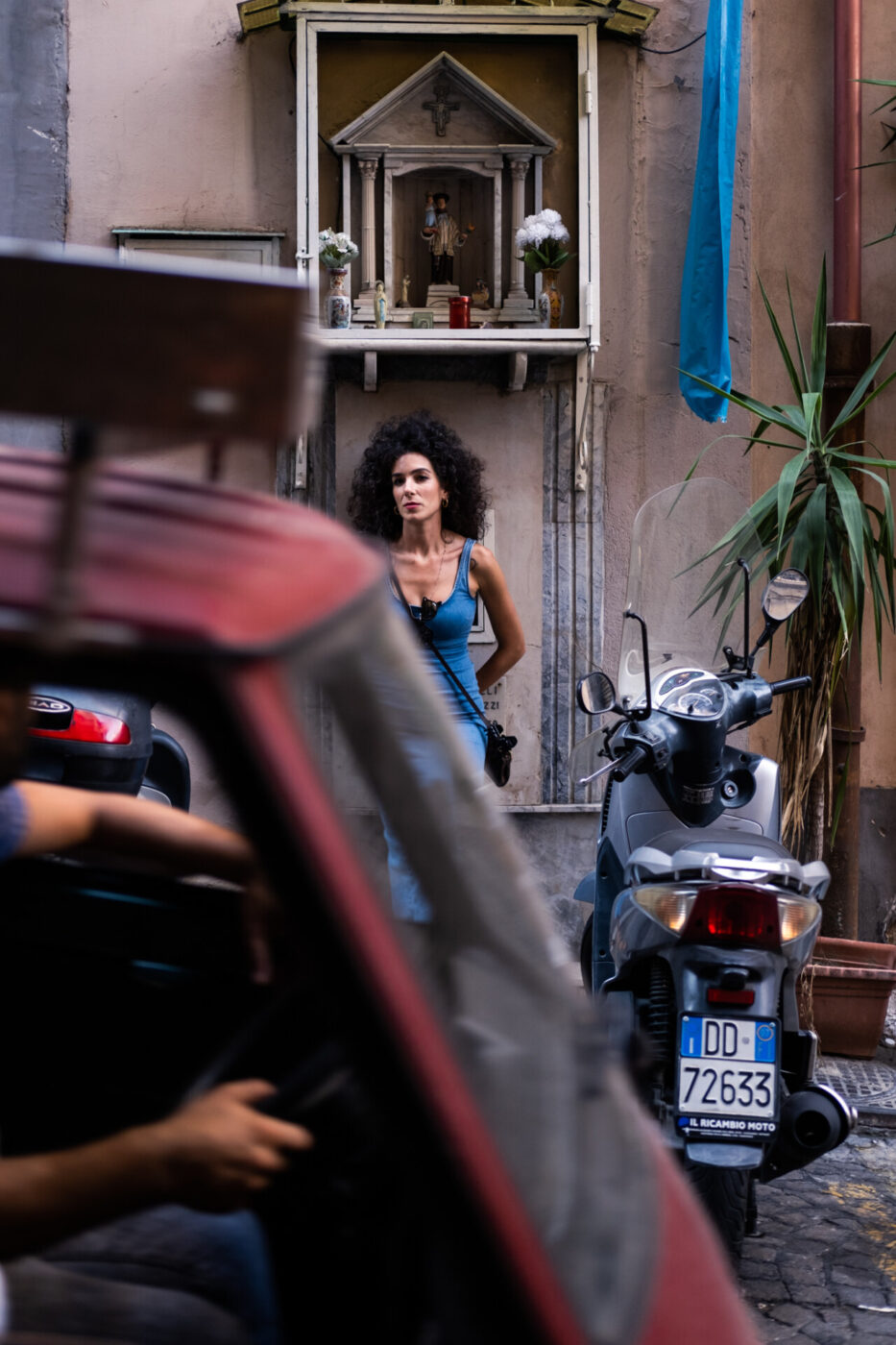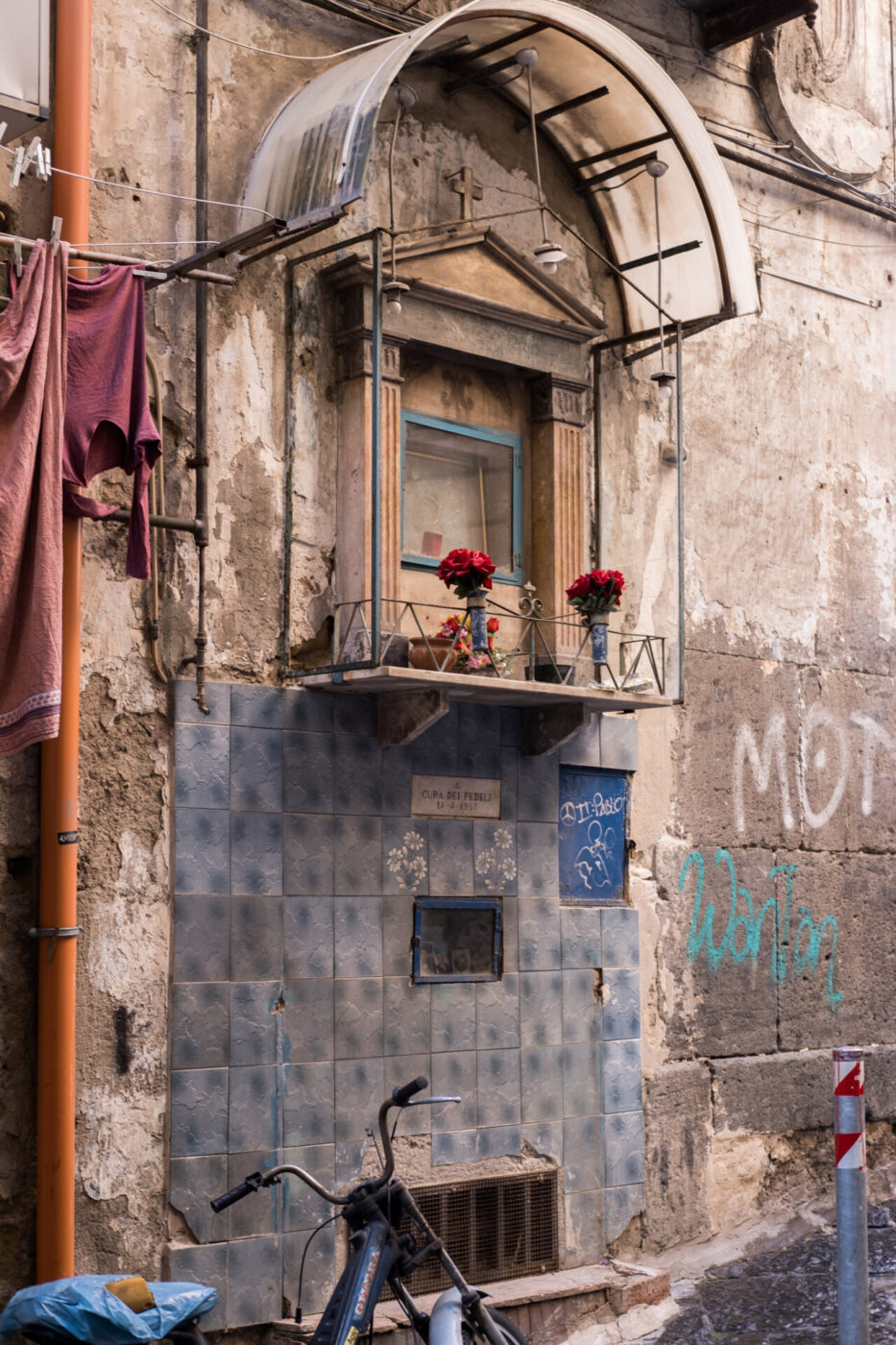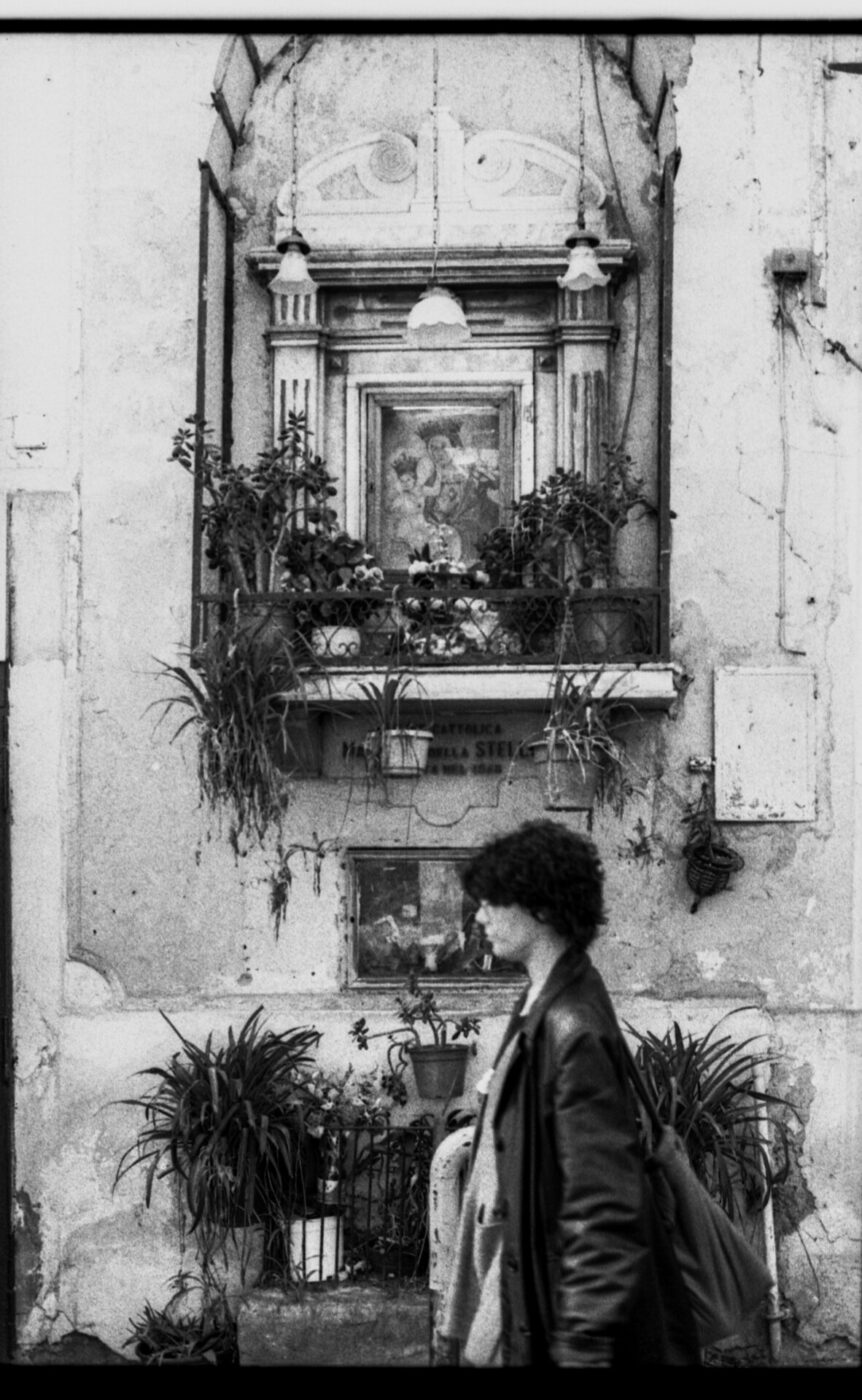It’s a common cliché, both among Neapolitans and tourists, to say that Naples is the realm of the sacred and profane. This is a definition I don’t really like; it’s a bit like rhetorically associating the city exclusively with the sun and the sea, when one should understand that its richness is almost always hidden in the shadows.
My passion for the discovery of Naples’s less-unveiled charm was born many years ago, when I lived on the edge of Piazza Mercato. It was 2007, when the city declared a “garbage emergency” for the trash that accumulated in the streets of Naples and surrounding areas, a result of inadequate waste management infrastructure and political corruption, as well as organized crime involvement. But among the decomposing bits and bobs, pops of the decomposable remained: marble figures of a saint or a Madonna, elevated in altars, shelves full of flowers, ribbons, photos of the deceased, ex-votos, and heartfelt letters of prayers and intercessions. Miniature temples complete with pillars and gifts from the faithful, seeking to ingratiate themselves with holy protection or give thanks for a miracle received. I started photographing them, documenting them slowly, until I realized that mapping the entire city was an almost impossible job.
These votive shrines, also known as altarini or tabernacoli, pop up around the city like mushrooms, with a greater frequency in the historic center, the areas of Greek-Roman foundation–in the Quartieri Spagnoli, around Piazza Dante, in Sanità, in Forcella. They’re hidden, yes, in a corner, smothered by mopeds, hidden behind hanging laundry, but it’s impossible not to notice them: often illuminated by neon lights (blue is a preference here) and colorful. Some may be small and shabby, but others are magnificent and cared-for, like those dedicated to the Seven Sisters, Campania’s seven Madonnas, who are particularly revered by the Marian cult.
The origin of these altars comes from an intimate, domestic rite of the Greeks, and later Romans: each domus had inside, in corridors or courtyards, small marble or stone tabernacles dedicated to the deities of that time. The richest homes had splendid tabernacoli: you can see one decorated with mosaics in the House of the Skeletons at the Herculaneum excavations, or one with shells and stained glass gems in the House of Neptune and Amphitrite. They were called larari and honored the Lari gods, minor deities who represented the protective spirits of deceased ancestors. According to Roman tradition, they watched over the property, the family, and their social and financial activities.
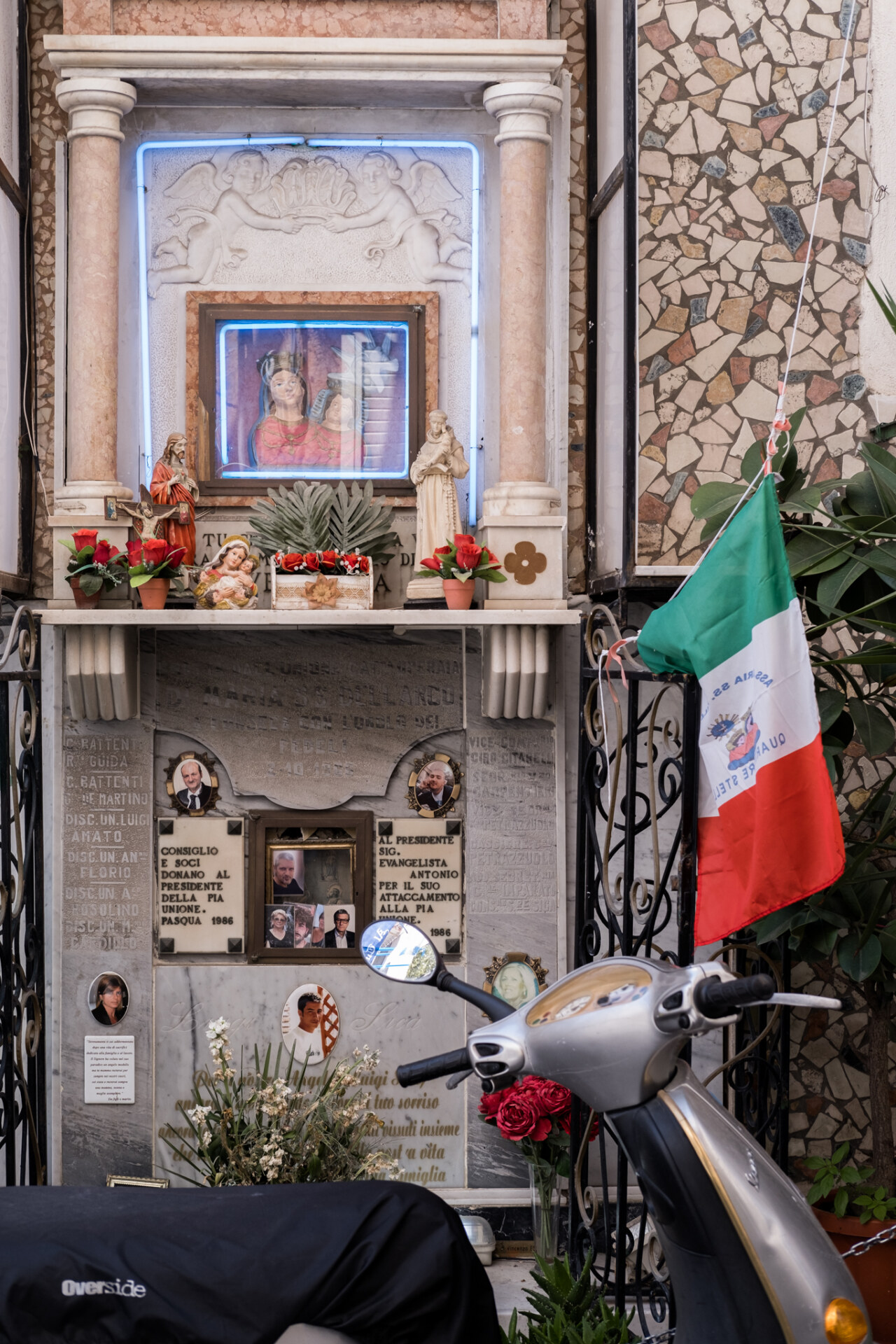
The ancestor was depicted with a figurine made of clay, wood, or wax, called a sigillum, honored with the lighting of a flame. Important events–the transition to adulthood, marriages, births, departures and returns–were placed under the protection of the Lari with sacrifices and offerings–flowers, wine or cider, statuettes.
These altars were, in short, tutelary garrisons of the household.
But there were public lares too. For the less wealthy, as well as those in the countryside, altars were placed at crossroads, accessible to all. Perhaps it is from these that the more modern Neapolitan altarini were born.
Returning to the Campanian capital in the 18th century, the reign of Charles III of Bourbon witnessed the flourishing of altars in the city’s streets. Credit here goes to his advisor, Father Rocco of Massa Lubrense, who encouraged the construction of holy shrines to kill two birds with one stone: the first, to kindle worship; the second, to light the streets. Urban lighting in those days was scarce–not only were oil lamps costly, but required much manpower and servicing. Lamps were reserved for the places of greatest social and cultural importance, but, because of the widespread diffusion of countless altars, a kind of embryonic public lighting was born by the candles placed to “guard” the altar.
Without having to submit to the judgment or veto of the clergy, anyone in Naples could erect a little altar: for a special devotion to a saint, for a grace received, to remember a dearly departed, for a supplication, and thanks to this freedom, today, we encounter hundreds, if not thousands of them. (Unfortunately, there are no real statistics yet on how many populate the city.)
There are some particularly famous altarini: how can the one, in the form of a fresco, dedicated to St. Gennaro, St. Rosalia, and St. Francis on Porta San Gennaro go unnoticed? And every Neapolitan has at least once encountered the grand altar in Piazza De Nicola, designed by none other than Fernando Sanfelice and later sculpted by Lorenzo and Domenico Antonio Vaccaro. Featuring the bust of St. Gennaro in the center, this one was commissioned and paid for by the Deputation of the Treasure of St. Gennaro, as gratitude for the saint’s protection during various city calamities.

How can we not mention the tabernacle dedicated to Maradona in Spaccanapoli, in front of the statue of the Nile, complete with the Pibe de Oro’s curl? And one of the oldest and most discreetly preserved, dating back to 1884, that of Our Lady of Sorrows in Via Pisanelli, erected to exorcize the specter of death due to cholera? (In 1884, there was a terrible epidemic in Naples that claimed more than 8,000 deaths; we find many altarini bearing that date.) There’s also a very cool wooden one, perfectly contemporary and extremely pop in Via Portacarrese in Montecalvario, made by those behind Guerrilla Spam, a collective of Florentine artists, in black and white geometric decorations.
Personally, I prefer the smaller and more hidden altarpieces, small treasures to be discovered by getting lost in the streets of Naples: there are beautiful ones all over the Quartieri Spagnoli and in the Cavone area, in the less traveled meanders of Sanità, but also in less central areas, such as Fuorigrotta, Montesanto, or Arenaccia. I’ve encountered fewer of them in Chiaia and Vomero, perhaps because these areas were better lit at the time, though Chiaia does count a remarkable one on Vico delle Fiorentine dedicated to the Madonna dell’Arco.
I have often wondered about the reason for my fascination with votive wayside shrines, and I think the answer lies in the love of discovery: I don’t even have to go out of my way to turn a corner and find an altar that is never the same as the previous one, often smothered among clothes hanging, exhaust from hoods and mopeds, neon with real and fake flowers. And I think this interest is the preserve of quite a few people, because, in 2023, three shrines popped up dedicated not to a saint or a Virgin, but to Zelda, the famous princess from the video game “The Legend of Zelda”, complete with plastic rosettes and a Greek temple–a marketing stunt to promote the launch of the new game “The Legend of Zelda: Tears of the Kingdom”.
I find my mapping entertaining but also important: some altars are shabby or abandoned and may disappear or lose their history. Sure, there are many others that are perfectly preserved and pampered, but this should not exclude also the recovery of the less fortunate ones, the older and therefore precious ones. They exist not only in Naples and Campania, but all over Italy and even the world, especially South America.
To me, the Neapolitan votive altar is a perfect summarizing symbol of the spirit of the city itself–endurance, genius, devotion, care and neglect–and of some of its absolute contrasts–light and shadow, ancient marble and neon pop, artistry and abandonment.
